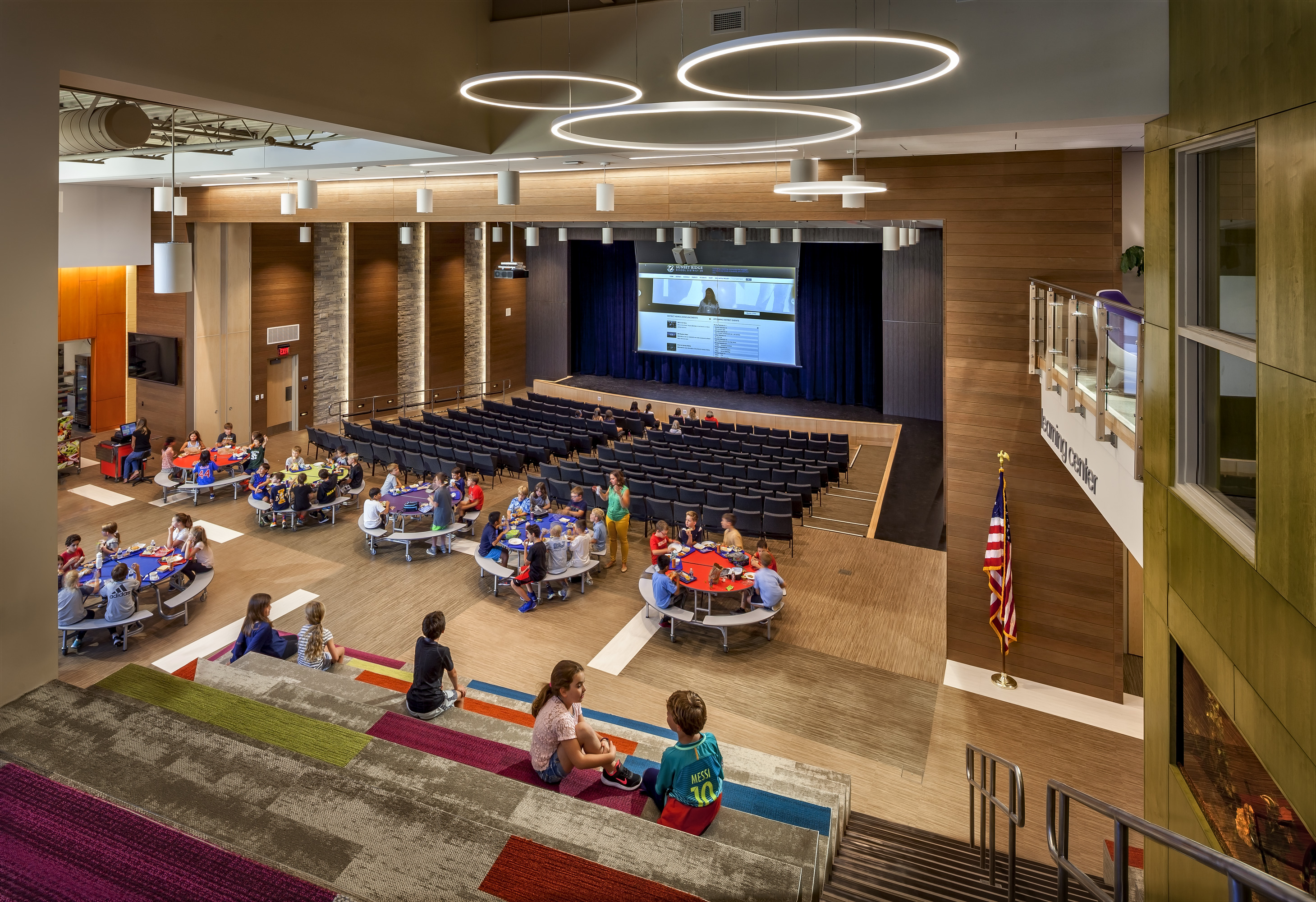
Green school buildings are better for communities
Green school buildings are better for communities because the process of creating greener schools requires learning, collaboration and engagement from the entire school community. The result of this process is a healthy, sustainable environment for learning and working that often becomes a source of civic pride.
- Schools are the center of community life: School buildings can serve as valuable community infrastructure before and after the school bell rings each day. Facilities are typically available for hosting community meetings and activities, weekend markets and disaster-relief shelters. As a result, green schools not only impact the school community but also help educate neighbors about sustainable living and develop the social infrastructure of neighborhoods.
- Green schools improve community behaviors: In a survey of building occupants in green schools, 71 percent of respondents “saw evidence of an improvement in student behavior, notably less violence, vandalism, and bullying.” A separate study looking at children’s positive behaviors in renovated green schoolyards in low-income urban neighborhoods over time corroborates this, finding fewer injuries, enhanced perceptions of safety and decreases in bullying and gang activity, with positive changes in physical activity and social interaction maintained up to 32 months after renovation. In another survey of green school leaders, 99 percent of responding principals reported improvements in student engagement, and 77 percent of respondents reported improvement in community engagement.
- Green schools enhance learning by cultivating local experts: Building and operating greener schools can grow the level of professional expertise in a community by providing new business and training opportunities. Local builders and facilities managers can help students track the energy savings generated from the use of solar panels. Landscape architects can be invited to conduct research with biology students on native plants, soils and wildlife habitats. Students become ambassadors of social and environmental responsibility, educating their family, friends and community about the value of sustainable lifestyles.
- School investment increases property values: Studies have shown that investing in public school infrastructure increases the value of property beyond the amount borrowed, boosts enrollment and helps rebuild confidence in a formerly struggling district or school. According to the National Association of Realtors, the quality of the school district was a deciding factor for 26 percent of all homebuyers—and 35 percent of homebuyers ages 37–51. In a 2005 survey, Turner Construction found that 87 percent of school executives who have invested in green buildings reported improved community image as one of the top benefits of green schools. Well-regarded schools increase property values, encourage business investment and job creation, and serve as the cornerstone of vibrant communities.